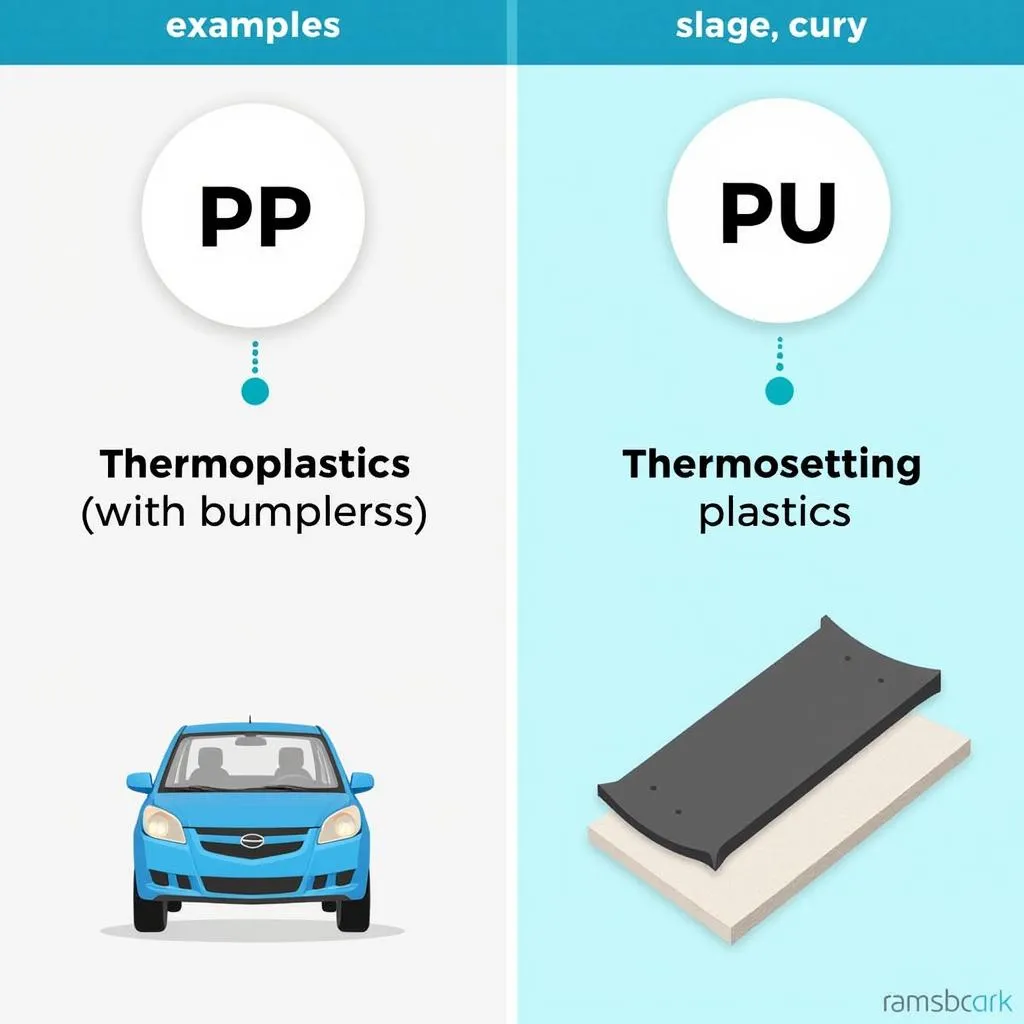Choosing the right material for your car bumper repair is crucial for both aesthetics and functionality. Whether you’re a DIY enthusiast or seeking professional help, understanding the different car bumper repair materials available can make a world of difference in restoring your vehicle to its former glory.
Decoding Your Car Bumper: Material Matters
Before diving into the repair materials, it’s essential to identify what your bumper is made of. Modern car bumpers are typically made from two primary materials:
- Thermoplastics: These plastics are known for their flexibility and ease of molding. Common types include polypropylene (PP) and polyurethane (PU). Thermoplastic bumpers are generally easier to repair for minor dents and scratches.
- Thermosetting plastics: These materials, like fiberglass, are more rigid and offer superior impact resistance. However, repairing thermosetting plastic bumpers often requires specialized skills and tools.
Common Car Bumper Repair Materials and Their Uses
The type of damage on your bumper will dictate the most appropriate repair material. Here’s a closer look at some popular options:
1. Plastic Bumper Repair Kits
Ideal for minor cracks, scratches, and dents on thermoplastic bumpers, these kits usually include:
- Filler: Used to fill in scratches, gouges, and small holes.
- Hardener: Activates the filler and speeds up the drying process.
- Reinforcement Mesh: Provides additional strength for larger repairs.
- Sandpaper: Used to smooth and level the repaired area.
Expert Insight: “Always choose a plastic repair kit specifically designed for automotive use. These kits are formulated to withstand the harsh outdoor elements and resist fading from UV exposure.” – John Miller, Certified Automotive Technician
2. Fiberglass Repair Kits
Fiberglass cloth and resin are the go-to choices for repairing larger cracks and holes in both thermoplastic and thermosetting bumpers. Fiberglass offers excellent strength and durability, making it suitable for more extensive damage.
3. Body Filler (Bondo)
Body filler, commonly known as Bondo, is a versatile material used to fill dents, smooth imperfections, and reshape car bumpers. It’s essential to use body filler sparingly and only on areas that don’t require significant structural support.
Expert Tip: “When applying body filler, remember that less is more. Applying thick layers can lead to cracking and an uneven finish.” – Sarah Chen, Automotive Body Repair Specialist
4. Bumper Welders
For serious cracks and breaks in thermoplastic bumpers, a bumper welder can be a lifesaver. These specialized tools use heat to melt and fuse the plastic back together, creating a strong and seamless repair.
5. Adhesion Promoters
Adhesion promoters play a critical role in ensuring that the repair material bonds securely to the bumper surface. They create a stronger bond between the existing bumper material and the repair material, preventing future peeling or cracking.
Factors to Consider When Choosing a Repair Material
- Type and Extent of Damage: Minor scratches might only require a plastic repair kit, while severe cracks may need fiberglass or even a bumper welder.
- Bumper Material: Ensure the repair material is compatible with your bumper’s material (thermoplastic or thermosetting).
- DIY Skill Level: Some materials, like body filler, require practice and expertise for a flawless finish.
- Budget: Repair material costs vary significantly. Consider your budget and the long-term durability of the repair.
Conclusion
Selecting the right car bumper repair material is vital for a successful repair. By understanding the materials, your bumper composition, and the extent of the damage, you can make informed decisions to restore your car’s appearance and protect your investment.
Remember, if you’re uncertain about tackling the repair yourself, seeking professional assistance is always a wise choice.
FAQs about Car Bumper Repair Materials
1. Can I use superglue to repair a cracked bumper?
While tempting, superglue is not recommended for car bumper repairs. It lacks the flexibility and durability required to withstand vibrations and impacts.
2. How long does it take for body filler to dry?
Body filler typically dries to the touch within 30 minutes, but it requires a full 24 hours to cure completely.
3. Is it necessary to sand the bumper before applying repair materials?
Yes, sanding the damaged area creates a rough surface for better adhesion of the repair material.
4. Can I paint over the repaired area?
Absolutely! Once the repair material has cured and been sanded smooth, you can prime and paint the area to match your car’s original color.
5. Where can I find reputable car bumper repair services near me?
For professional assistance, check out our resources on car bumper repairs Newport Porth, car bumper repairs London, and car bumper repair Sioux Falls.
For more information on car bumper repair and other car maintenance tips, explore our website:
- Learn how to repair a scratched plastic car bumper: how to repair a scratched plastic car bumper
- Get an estimate for your car bumper repair: car bumper repair quote
Need further assistance? Contact us via WhatsApp: +1(641)206-8880 or Email: [email protected]. Our dedicated customer support team is available 24/7 to assist you with any car repair concerns.


